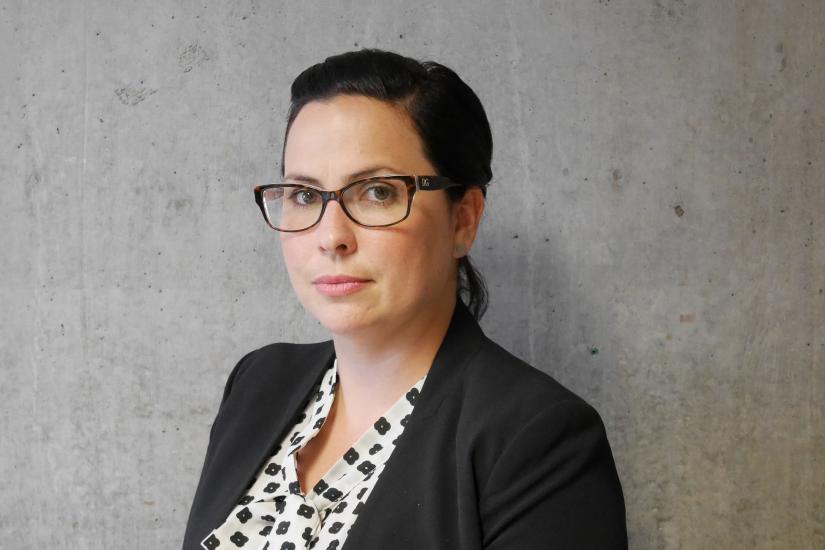Obsessive compulsive disorder affects people of all ages and from all walks of life. Yet diagnosis may take years or even decades and there are significant obstacles for those needing treatment.


Fewer than one in five people with obsessive-compulsive disorder (OCD) receive the treatment that is considered gold standard, says clinical psychologist and researcher Associate Professor Bethany Wootton. As a result, many spend their life struggling with this generally very treatable mental health condition, leading to impacts such as depression, loneliness and family dysfunction.
“People live with this condition for a lot longer than they need to,” Associate Professor Wootton says. “It can often take someone 10 years from the onset of symptoms to actually seek help.
“That’s a long time in itself. But when you have experience of seeing professional after professional who doesn’t provide an evidence-based treatment, it can mean 20, 30, 40, 50 years of a condition that really affects your quality of life.”
Associate Professor Wootton’s response is an internet-delivered program for OCD sufferers that addresses the hurdles they face in securing timely access to exposure response prevention (ERP), described by the International OCD Foundation as the most important type of cognitive behaviour therapy for this condition. More than 700 people have gone through the program so far, with multiple clinical trials showing it has a comparable effect to face-to-face treatment.
“People live with this condition for a lot longer than they need to.”
–Bethany Wootton
Obsessive compulsive disorder affects people of all ages and walks of life and occurs when someone becomes caught in a cycle of obsessions and compulsions. Obsessions are unwanted, intrusive thoughts, images or urges that trigger intensely distressing feelings. Compulsions are behaviours the individual engages in to try to get rid of the obsessions and/or decrease his or her distress.
A diagnosis is made when this cycle of obsessions and compulsions becomes so extreme it gets in the way of important activities.
There are many hurdles to accessing care for OCD, Associate Professor Wootton says, starting with physical barriers to treatment. “If you’re a parent at home, that means finding someone to look after your kids. If you’re working that means taking time off, because most treatment providers work nine to five as well,” she says.
People may end up with a psychologist who isn’t a specialist in OCD. “There’s a science-practice gap, where what we know works scientifically isn’t what people get,” she says. “Unfortunately when people do access care, many are not getting the right care.” Other barriers include stigma, the direct and indirect costs of treatment, and geographic isolation.


With extensive experience of treating the condition in Australia and the United States, and seeing the barriers, Associate Professor Wootton was determined to develop a remote CBT intervention.
“I felt I could develop a program that covered all the different types of OCD and which provided good-quality, evidence-based treatment,” she says. “There are nuances, but overall I felt I could develop something that would make sense for most people and give them the basics of what they need for treatment.”
In the program, people access online the materials developed by the research team, and do most of the “work” from there. A psychologist checks in to encourage them, help them overcome any problems, and build individualised “exposure hierarchies” for their particular presentation of OCD.
“It’s not a cure for everyone, but it’s a good first step.”
-Bethany Wootton
Most people like the privacy and anonymity of the program, clinical trials show. They also like that it’s free and easy to access, with the program now available through the MindSpot clinic [opens external site].
It’s not a cure for everyone, Associate Professor Wootton says, but it’s a good first step. “Some 30 to 40 per cent of people won’t need any other treatment afterwards.”
For those that do, her goal is to have a high-intensity treatment available remotely as well, in a “stepped” care program. The research team is also considering whether completely self-guided internet-delivered therapy is a viable option. In a randomised controlled trial, 38 per cent of the group who undertook self-guided therapy showed clinically significant change three months afterwards.
Associate Professor Wootton has also received an Innovator Award from the International OCD Foundation that is currently funding an investigation into the predictors of therapy outcomes. This knowledge would inform decisions about which people should be directed to lower-intensity care and those who should be assigned to higher-intensity care. This research program is currently running through Macquarie University’s eCentreClinic [opens external site].
Internet-delivered treatment could mean a massive cost saving in government spending on this condition, Associate Professor Wootton says. Based on current Medicare rebates, the cost of the internet-delivered program comes to just $190 when delivered with the assistance of a clinician, versus more than $1600 for face-to-face therapy on average. The costs are even lower when the program is delivered in a self-guided fashion.
More importantly, “with wait lists as they are, being able to provide these sorts of services is essential so people can access care quickly”, she says.






































